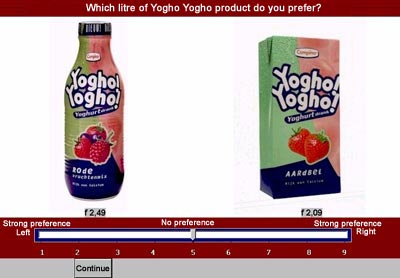|
|
 Example choice task  |
|
PMR offers a wide variety of conjoint analysis tools: These 3 methods all have their strong and weak points. The preference for a particular method also depends on the research application, the market in which the product operates and the target group of the research. All 3 methods provide essentially the same research results and marketing information. |
| Multimedia support not only makes the interviews more realistic and interesting for the respondents, but it also offers new possibilities. Respondents can, for example, become acquainted with new product concepts by means of (moving) images and sound. In this way design aspects (such as with respect to packaging) can also be included.. |